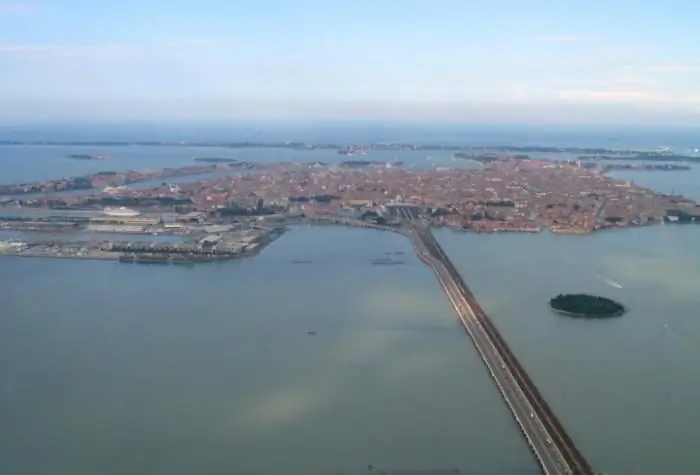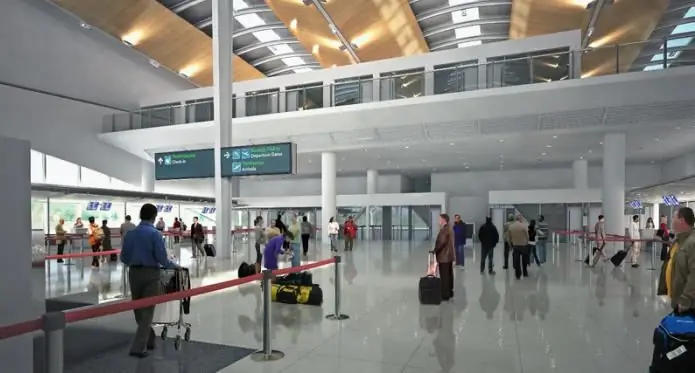- Author Harold Hamphrey [email protected].
- Public 2023-12-17 10:06.
- Last modified 2025-01-24 11:10.
Ust-Tsilma is one of the most ancient villages in northern Europe. It has the status of the center of the district of the same name, inhabited by people several millennia before our era.
History of occurrence
According to information from written sources and the results of archaeological excavations, the Russians appeared on the Pechora at the dawn of the second millennium AD. e. Information about that period that has survived to this day suggests that most of these people were Novgorodians.
Ust-Tsilma also appeared thanks to the efforts of Ivan Lastka, a resident of Novgorod. In 1542, he was granted a royal charter, which allowed him to dispose of the territories along the banks of the Pechora. Soon, Pinezans and Mezens joined Lastka. For them, the Tsilma basin has long played the role of a fishing ground. At first, cattle breeding and agriculture did not have much importance in the life of the local population.

Thanks to archaeologists, a unique ancient document was found - "Payer". It is in it that the first mentions of Ust-Tsilma are located.
New time
The Pechora Territory began to interest more and more settlers in the 17-18 centuries. This process is associated with the schism of the Church, inas a result of which adherents of the old faith were forced to flee from persecution in the inhospitable northern region. Ust-Tsilma has become a home for many Muscovites, Novgorodians and Pomeranians. Thus, the settlement turned out to be the center of the Pechora Old Believers in the northeastern lands of the European part of Russia.
When the Old Believers came to Pechora, they tried to isolate themselves from their closest neighbors - the Nenets and Komi-Izhens, in order to preserve their religious culture. The result of a multi-stage process was a unique ethnic group with a unique dialect, special features of life and culture, as well as other differences that make it possible to separate it from other peoples.
At the end of the eighteenth century, Ust-Tsilma acquires the status of an important economic center of Pechora. The village had strong permanent trade ties with Arkhangelsk, Veliky Ustyug, Cherdyn Territory, Pinega and Ust-Sysolsky.
According to the note of Yermilov (a provincial official from the retinue of Prince Golitsyn), at the end of the nineteenth century there were 1100 buildings and 4000 souls in the settlement in question. Thus, the village, both in terms of the number of inhabitants and the area, was larger than any city in the Arkhangelsk province. In May 1891, Ust-Tsilma became the center of the large Pechora district.
Recent Times
At the beginning of 1911, the Pechora Agricultural Experimental Station was opened in Ust-Tsilma, which became the first research institution in the North of the European part of the RSFSR. The basis for it was the data obtained as a result of complex expeditionary surveys of the region in 1902-1910. Themconducted by A. V. Zhuravsky, who later became the first director of this station. It functioned until 1957. Thanks to the activities of this institution, a scientific idea was formed in the region on the issues of fodder production and animal husbandry.

In July 1929, the Ust-Tsilemsky district became part of the Komi ASSR. The difficult conditions of the North, the lack of a road network and remoteness from industrial centers had a negative impact on the formation of the economy and life of the inhabitants of the harsh region.
On January 1, 1932, Ust-Tsilma (Komi ASSR) became the seat of the administration of the Pechora Shipping Company. In addition, the settlement was declared the center of the river fleet of the region. Soon, an airport was officially opened near the village. Ust-Tsilma is located one kilometer from the "air gate". The size of the runway is 1332 by 32 meters.
The construction of the first large industrial enterprise - a suede factory - started in 1930. Two years later, it began to produce products. In the 30s of the twentieth century, logging became one of the main industries of the region. The Ust-Tsilemsky timber industry enterprise was established in 1933. Since then, its production tasks have been increasing. So, in 1940-1941. almost one hundred thousand cubic meters of wood was harvested.
Agricultural industry
As already noted, conditions in the Ust-Tsilemsky region are harsh. Despite this, the agricultural industry has always been one of the leading ones. So, in the 1980s, the Subpolar Territory provided the country with 11% of milk and 9% of meat. CurrentlyUst-Tsilemsky district is a region where innovations are intertwined with antiquity.

Natural we alth
The area under consideration has fuel and energy resources and a complex of non-metallic mineral raw materials, including precious metals, bauxite ores and diamonds. The development of industry is still hampered by the remoteness from economic centers and the lack of a regular transport network. Nevertheless, there are prospects for further development, and all thanks to rich subsoil.
Local Media
How can you find out how the village of Ust-Tsilma lives? Krasnaya Pechora is the first regional and city newspaper in the Komi Republic. The pilot issue went into circulation on October 10, 1920. For the region, practically devoid of means of communication, destroyed by the civil and First World Wars, this was a very significant event. Twenty-year-old Alexander Zaboev became the editor-in-chief. The ambitious young man even initiated the dispatch of the Krasnaya Pechora to Lenin. Vladimir Ilyich conveyed words of gratitude to the editors for their work. The leader of the world proletariat wished "Red Pechora" to become a symbol of the flourishing of the harsh region, its liberation from devastation, ignorance and darkness. Moral support from the capital helped the new periodical gain a unique character and stand on its own feet.
Famous holiday
Every year in July, the village of Ust-Tsilma is transformed. "Gorka" - a spring-summer ritual celebration, which received the statusRepublican in 2004 - a source of fun and good mood not only for local residents, but also for tourists. It consists of two components - dancing and driving. The latter, in turn, is represented by six figures - “Pillars”, “Rein”, “Wattle”, “Circle”, “Side to Side” and “Square”. The dance quadrille includes eleven figures - Barino, Apple, Chastushki, Krakovyak, Canopy, Polka, Marusenka, Along Pavement Street, Pas de Spagne and Kamarinskaya "".

In July 2012, the holiday was especially magnificent, as the village celebrated its 470th anniversary.
Symbolics
In 2009, the Union of Russian Heraldists started developing the coat of arms of Ust-Tsilma. This happened thanks to the application of the village administration. The background of the coat of arms is azure. It has a narrow belt formed from three black and three yellow squares. They alternate with each other. Inside them, three black and yellow squares are placed at an angle, and each of them has a red “crutch” pattern. A silver beaver is placed above the belt, holding a bunch of sedge of the same color in its front paws. Below is a curved salmon beating its tail. The fish is dyed silver.
Attractions
There are more than seventy monuments of culture and history on the territory of the Ust-Tsilemsky district. In the village itself, about twenty places keep the memory of wonderful people and important events that influenced the development of the region. They are living witnesses of the past and help to recreate the atmosphere of a particular historical period. Many monuments are associated withthe heroism of the ancestors and the numerous wars that befell this harsh land.
Copper and silver mines
This monument is one of the oldest in the region. The ore was discovered on Tsilma as early as 1428. Currently, five pits can be seen at the place where the metal was previously mined.

Great Lady Skete
At the dawn of the eighteenth century, an Old Believer skete arose on Velikaya Pozhna. It was formed by representatives of the Mezen peasantry and people from Vyga. Thanks to this skete, Pechora was supplied with Old Believer literature. The schismatic hermits led a life similar to that of the peasants: they were engaged in uprooting the forest for fields and clearing the sap from bushes. Life was hard and hungry. Today these lands are occupied by the village, but they are still known as the place of self-immolation of the Pechora Old Believers. As a result of those sad events, 86 people died.
Monument to A. V. Zhuravsky and Museum
This outstanding researcher made a valuable contribution to the development of the Bolshezemelskaya tundra and actively participated in the process of identifying opportunities for agricultural development in this region. The sculptural composition "Andrey Zhuravsky" appeared in Ust-Tsilma in October 1981. Its author is V. A. Rokhin, a Syktyvkar sculptor who depicted a scientist walking through the taiga of the Timan region. The composition is made of wood (larch).
Organized by Zhuravsky in 1905, the Zoological Station became an outpost for the development of science in the north of the country. In memory of the merits of the scientist in Ust-Tsilma wasmoved (thus saved) his house. Currently, the building houses the Historical and Memorial Museum. Zhuravsky.
Memorial sign
This badge was made by sculptor Pylaev in 1985. It is designed to keep the memory of the highway from Arkhangelsk to Ust-Tsilma, the construction of which was completed at the end of the nineteenth century. This road was the only link to the big world. Carts with various goods and products went along it. In addition, political exiles were often driven along the highway, who died right on the way. It has since been said that this road is littered with bones.
Monument to Batmanov
It was opened in 1983 in order to preserve the memory of Vasily Foteevich Batmanov, who actively participated in the establishment of Soviet power in Komi. One of the streets of the village is also named after him.
Common Grave
22 (according to other sources 23) warriors killed by the White Guards in 1918-1920 are buried in it. Initially, the monument was wooden. The reconstruction of the mass grave was carried out in 1967, as a result of which fifteen obelisks and a brick monument appeared. During the next reconstruction, the central obelisk was replaced with a sculpture of a grieving mother.
House-Museum of M. A. Babikov - Hero of the Soviet Union
Makar Andreevich was born on 1921-31-07 in the village of Ust-Tsilma (photos of the settlement are presented in the article). Since 1940 he served in the Navy. For the battle during the capture of the port, Seishin Babikov was awarded the highest rank. Then he managed, together with a detachment, to break through behind enemy lines, capture a bridge across the river,destroy more than fifty enemy soldiers and six vehicles, as well as cut off the escape routes of the Nazis and hold their positions for more than eighteen hours.
Currently, there is a positive trend of increasing the role of historical and cultural monuments in the process of patriotic education of the younger generation.
Ust-Tsilma: how to get there?
In spring and autumn, the village is often cut off from the outside world due to ice drifts and freeze-ups. During this period, air transport on the route Syktyvkar - Ust-Tsilma helps out, however, a one-way ticket costs three and a half thousand rubles, which not everyone can afford. During mudslides, helicopters are assigned to Izhma and Pechora.

The rest of the time, buses run twice a day to the Irayol station. Fans of road trips should take into account that in summer the road between Ukhta and Irayol becomes almost impassable. Her condition improves significantly only in winter.
The distance from Moscow to the described village is 2313 kilometers, the length of the Ukhta-Ust-Tsilma route is 362 km.
Current issue
Due to the annual summer shallowing, the ferry sometimes stops running along the Pechora River. Ust-Tsilma is simply cut off from the outside world - to deliver passengers, food, building materials, etc. becomes nothing. The villagers get to the other side on an eight-seater boat provided by a private carrier. As for trucks and vans, they are waiting for improvementsituations on both sides of the Pechora.

Conclusion
For five centuries now, the village of Ust-Tsilma has been emblazoned on the hilly Pechora coast. Photos of this settlement, a description of its history and sights allow you to feel the beauty of the marvelous Russian region. Times, as well as attitudes towards the surrounding reality, are changing, only the spiritual values and freedom-loving disposition of the inhabitants of Ust-Tsilma remain the same.






